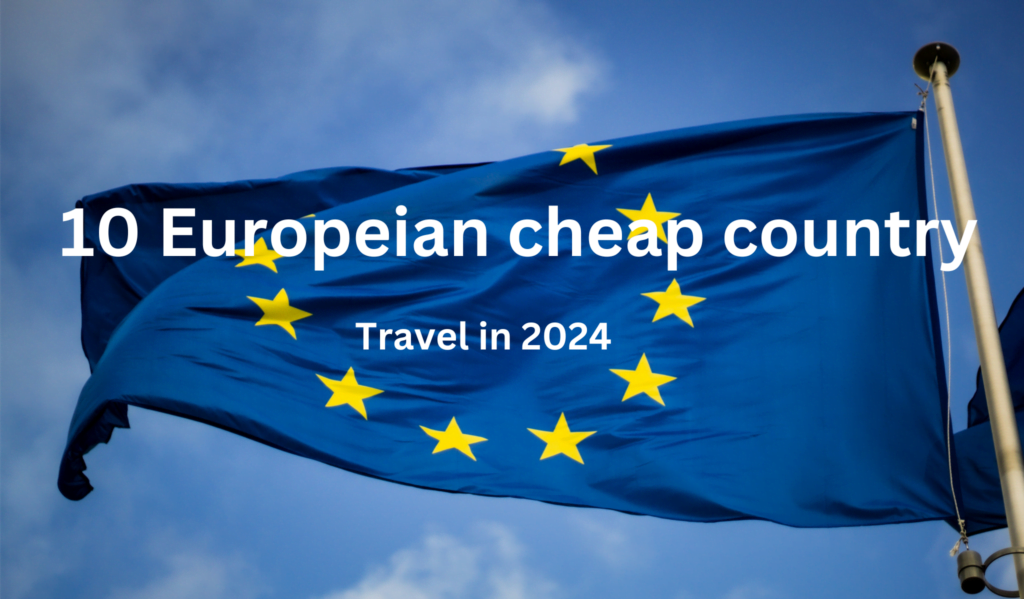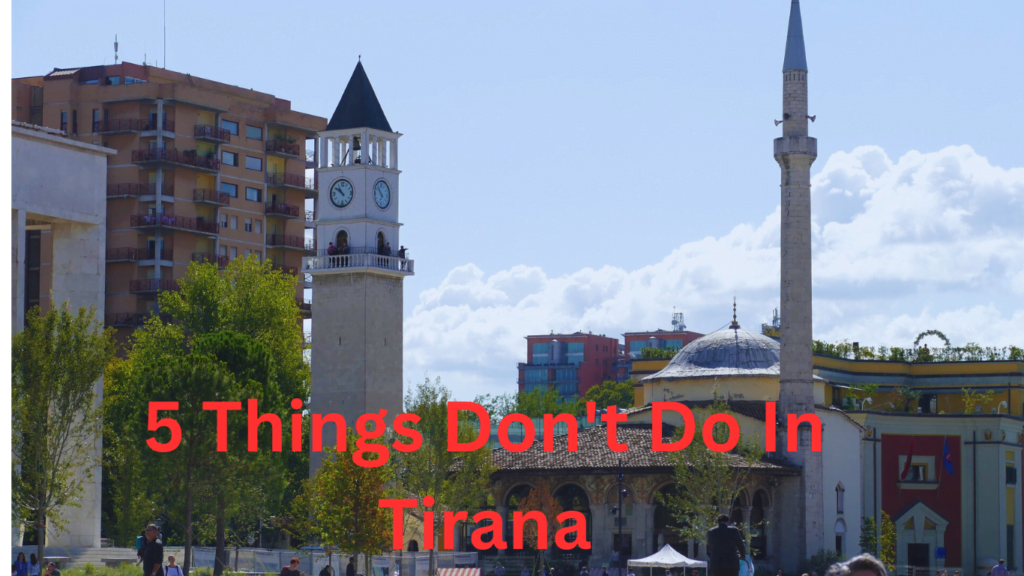What is Eurail? How do Eurail passes work? What is the difference between Eurail and Interrail? What are those pesky reservation fees all about? In this blog, we have the answer to all your questions, plus we’ll talk about some big changes that Eurail has made recently. So let’s get started, alright travelers? James here from BudgetVentureHub, and we are back with another blog on how to travel Europe. By now, you already know that we are talking about one of the most popular ways to get around Europe, and that is Eurail. Now, when it comes to Eurail, I don’t want a brag, but I’m a little bit of an expert. I’ve had 4 or 5 passes throughout my life. I just had a 3-month global pass that ended last month, and actually tomorrow morning I’m on a train from Sweden all the way down the road. And guess how I’m getting there? I mean, we all know the answer is Eurail, right? So when it comes to Eurail, I know what I’m talking about, and by the end of this blog, so will you. Plus, I’ll share some of my super-secret inside tips that help you get the most out of your Eurail pass. I want to find out the last thing before really breaking down your Eurail.
What is Eurail
As for what Eurail is, at its most basic, Eurail is a company that sells passes that let you travel around Europe. The biggest selling point of these passes is that they give you freedom – freedom to change your trip at a moment’s notice, freedom to hop on a different train if you hit the snooze button one too many times. And another big selling point of Eurail is that it is a set price, although this price is not always what it seems, but we’ll talk more about that later.
Types of Eurail pass
Eurail offers a variety of passes; you can get a single country pass, which is only valid for one country, or the global pass, which is valid for 31 countries. Eurail also used to have a multi-country pass, which means you could combine countries like Italy, France, and Switzerland. But recently, they have gotten rid of them and instead replaced them with irrelevant packages. Now, these are set itineraries throughout Europe, like Paris to Brussels and then to Amsterdam. Now, these are brand new, and I haven’t had any experience with them, so I can’t judge. But looking at them, I’m not a fan because it strips away some of that sweet freedom I was talking about earlier. Another good thing about Eurail passes is that you can customize them for the number of days you are traveling.
Difference between Eurail and Interrail
One point where travelers have a little bit of confusion is between Eurail and Interrail, and it’s easy to see why. These passes look almost identical, except that Interrail is a little bit cheaper. So, what is the difference and which one can you get? Well, the answer is actually really simple: Interrail is for EU residents only, while Eurail is for everyone else, even someone like me who Travelling in Europe but isn’t a citizen. I have to get a Eurail pass, not an Interrail pass, which sucks because, like I said, Interrail is a little bit cheaper.
How does it work
Okay, how do Eurail passes work? So, I’ve briefly talked about what kind of passes they are, but now let’s really break it down and see how they work so you can pick the right pass for you. The first thing you’ll notice when you go to buy a pass is that if you want to get a single-country pass or the global pass, you also have those Eurail packages, but we’re not dealing with those today. After you click on the type of pass you want, you’ll notice that you get a bunch of options for the amount of time that you need. Eurail passes come in blocks of time. So, for example, let’s stick with Italy (I’ve got Italy on the brain). For Italy, you can get a 3, 5, or 7-day pass. This means you have 3, 5, or 7 train days within a certain block of time that can be used in Italy. Usually, for a small pass like that, it would be around a month. It will say right next to how long the time frame is. Now, you could use these days back-to-back or spread them out throughout the whole month. That is up to you and your travel plans.
Buy pass before travelling
Two quick sidebars here: First, it is important to know that your pass does not start the day you buy it, but it starts when you activate it. For example, if you’re going to Italy in 3 months and you want to buy your pass now, you can go ahead and buy it and then activate it on the first day you are taking a train in Italy. Once you activate it, that month clock you have to use those train days starts ticking. So, you buy it now and then activate it when you are traveling. I usually do this since I know I’m going to buy it anyway; that money’s already gone. And if I’m buying it the day before I leave, then you’re just taking a big hit when you’re about to spend a bunch of money. I don’t like that feeling. I like knowing I have it and then not spending a bunch of money right before I’m about to go spend a bunch of money.
And our second sidebar is that the global passes have some different options, but we’ll talk about those later. For now, let’s get back to our 5-day pass in Italy. I’m picking 5 because I’m tired of saying 3, 5, and 7. I’m sure you’re tired of it as well each time.
I mean, using your pass is considered a train day. That means you can hop on and off as many trains as you want throughout the whole day, and it still only takes 1 day off your pass. Super important to note that a train day is from midnight to midnight; it’s not from your first train of the day. This is important because it can get you in trouble. Let’s say you’re taking an overnight train that leaves from 8 PM to 2 AM. Well, that is going to take 2 days off your pass. The first day of your pass would be from 8 PM to midnight, and then the 2nd day of your pass would be from midnight to 2 AM. So, that is super important to keep in mind when picking how many train days you need.
The global passes work pretty much the same way, where you can get a certain number of days in one month or you can get a certain number of days in 2 months. But Eurail does have some different options and passes that range from 15 days to 3 months. And these passes work like a ticking clock; once you activate them, the clock starts ticking, and within that time frame, you can hop on and off the train as much as you want. So, if you have a 30-day global pass, once you activate it, 30 days start, and within that time frame, you can take as many trains as you want—30, 40, 50. That’s a lot of trains. I don’t recommend taking 50 trains in 30 days. I don’t recommend taking 15 trains in 30 days.
Difference between passes
It’s really easy to tell the difference between these passes. If it doesn’t have a set amount of days stated like 3, 5, or 7, if it just has a time frame like 15 days or one month or 2 months, then it is a continuous pass, which are my favorite passes. I always try to go for these passes because it gives you a lot of freedom to move around, change your trip, don’t have to stress that maybe a train got canceled and there’s no more trains that night, but you already activated your pass, so that’s a waste of a day. It just gives you more freedom to move around and less stress. So, I recommend them. And they’re also good for anyone that doesn’t have concrete plans, that might go with the flow. These are great passes for you. If you’re very organized and you know you’re going to take 4 trains in 2 weeks, then you might want to get one of the other passes; it can save you some money. Because these global passes do cost a lot more. So, if you are on a tight budget, or even if you’re not on a tight budget but you know that you’ve got a very limited amount of time and that you have a very set plan of what you want to do and see, do not splurge on the global pass. Instead, get the pass that suits your needs; it will save you some money. It’s better to do that than to spend a lot of money hoping or thinking you might need those extra days and probably won’t. You could always maybe add one extra day onto your pass than what you’re thinking or just pay out-of-pocket for that extra ticket if you need it; it will be a lot cheaper in the long run.
Seat Reservations
Maybe we get to the biggest downside of Eurail passes, and those are seat reservations. Just because you have a pass doesn’t mean all trains you hop on are free. On some trains, you will have to pay a seat reservation fee. Wow, calm down, give me a second, I’ll tell you. While Eurail is still very helpful even if you do have to pay these reservation fees, and I’ll show you how to get around most of them at the end of the blog, I just want you to keep reading.
First of all, you don’t have to pay these fees on every train in Europe. It is mainly on the most popular routes during peak travel season, but even in the offseason, you will find places where you have to pay these reservation fees, and there are quite a few of them throughout Europe. The good news is that these reservation fees are much cheaper than if you would have just bought a ticket. For example, on my trip to Rome tomorrow, my reservation from Hamburg to Munich cost me, I think, €4.50. And just doing a quick search for train tickets, I can see that that route usually costs between €50 to €150, so it is still a bargain. I’m okay with paying €4.50, but I do hate reservations.
Eurail App: must use
What’s even cooler about using Eurail is that now it is super, super, super easy. I don’t want to age myself, but when I first started traveling and my first couple of Eurail passes, you had to get a physical pass sent to you, and I was always afraid because if I messed up or if that train got canceled, it would take up a precious slot in your pass, and you only had a limited number of them. So it was actually a little stressful sometimes. Today, all of it is done through the app. Although you can request to get a pass sent to you if you still want to go old school, but I highly recommend the app because it’s super easy to use. You can turn off and on train tickets with the click of a button, easily add a new train if something comes up, and on certain trains, you can even make reservations, though it’s not great. I think that is one thing that they need to improve quickly. They should just make it where you can make all the reservations you need on the app easily because right now, it’s a bit of a pain.
Ticket prices
Alright, let’s talk prices. Prices change depending on your age or the type of pass you’re after and how many countries you want it for. If you’re under 26, it’s a lot cheaper. If you’re over 60, it’s also a lot cheaper. But if you’re in the middle, like me, you pay the highest price. You can also pick between first and second class. I’ve had a first-class pass before, and it is really nice. Some of the trains will have snacks and coffee, there are better seats, they’re less crowded, and overall, it’s nicer. But those passes are a lot, lot more expensive, and honestly, I don’t think it’s worth the price unless you’re traveling to places like Hungary or Serbia, things like that where the trains are kind of rough. Then, first class might be nice, but I’ve never been in first class on those trains, actually, so I don’t know. I would say overall, it is not worth the price increase for the luxury.
Prices start as little as $84 for a single-country pass and as high as $789 for a 3-month global pass, and Eurail does offer sales sometimes, usually a 10% off. Earlier this year, they had a really, really good sale that was like, I think it was 50% off, and that was for a big anniversary. That sale is not coming back around. There is no way. Don’t wait for it. If you see 10% off, you go ahead and grab it. And I also have links down below to check out some of the passes for yourself. These are affiliate links, so you don’t pay any extra, but I get a small commission for referring you, which goes directly to helping Ginger on the Go keep going. Please figure out if a Eurail pass is worth it for you. There’s no easy way to do this; you just have to do the math. Sit down and write out your itinerary, write how many trains you think you need, then go to the country’s website or a third-party site like Rome2rio and see how much those train tickets cost. Train tickets do change; they go up and down quite often. This doesn’t need to be an exact number; you can just get an estimate and then compare that to the price of the pass and see if you think it will be worth the money.
I find that it is usually worth the money. When I was traveling in France with my mom a couple of months ago, she was pricing her train tickets or getting ready to, and I said, “Well, that’s the abbey’s app first,” and we ended up getting her a Eurail pass for like $250.
Eurail pass hacks+ Benefits
So let’s get to a couple of my Eurail pass hacks. First of all, to avoid reservation fees, in Europe, it’s easy to avoid these fees. Just go into the app, search for the train you want. If it says “reservation,” well, you can go into the filters at the very top. You will see the filter for only finding trains that do not require a seat reservation. These trains do take longer, but you won’t have to pay that extra fee, so it might be worth it depending on what the reservation fee would be. A lot of people don’t know that the Eurail pass also comes with benefits that can give you discounts all over Europe.
All you have to do is go to “More” in the app, go to “Benefits,” and there you will see a list of benefits. You can search by your destination. And like I mentioned earlier, there are sales. If you’re not traveling until next summer or a few months, you can check every week to see if a sale has started, and you might be able to get 10% off.
So, that’s all the information tips and tricks as my personal experience. Though, if you need more information about Eurail or anything about Europe Budget travel just comment blew. Also subscribe on our website then you will get all important budget tips direct to your mail.
Happy travelling.





